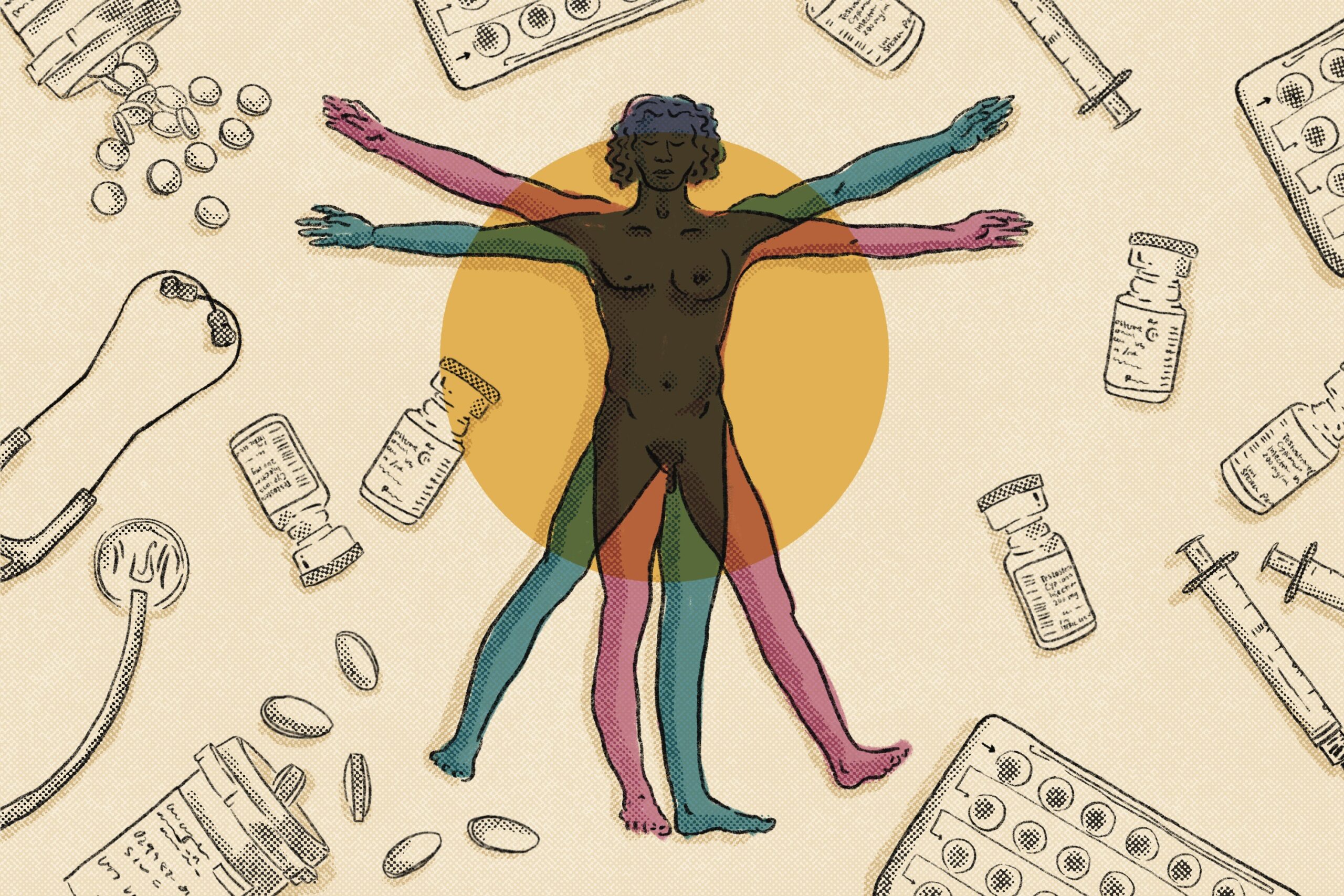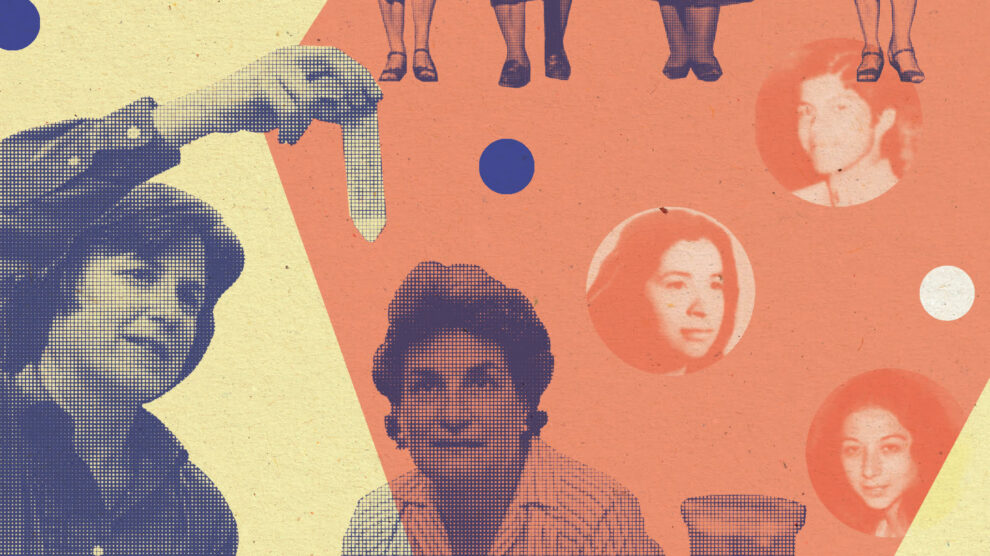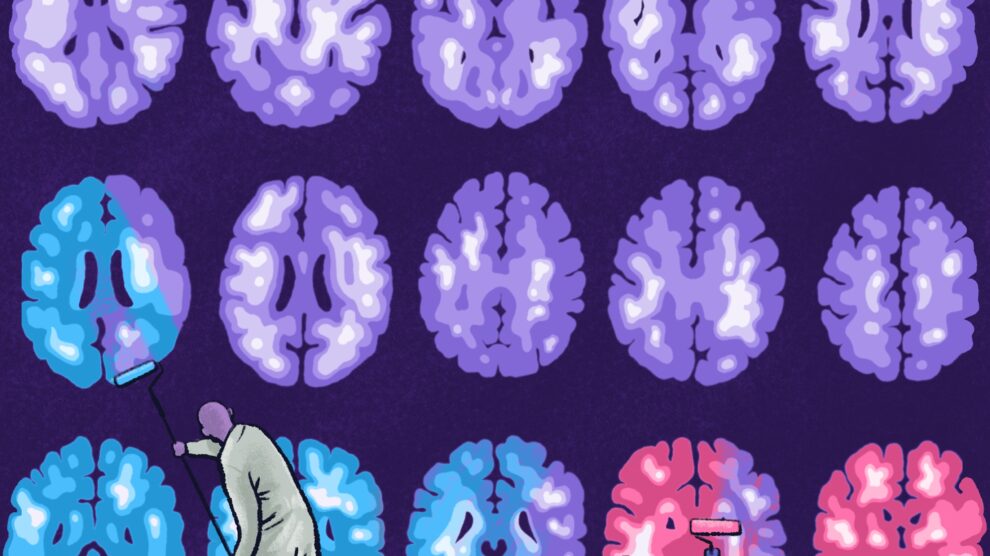
The Invention of the “True Transsexual”
By Madeline Stump
Volume 26, no. 1, Gender: Beyond Binaries
Introduction
The publication of The Transsexual Phenomenon 1 by endocrinologist Harry Benjamin in 1966 was a tremendous tipping point in trans medical history. The readability of the text, its widespread publication, its recommendation that “treatment” for trans people should be based in the medical as opposed to psychological fields, its standardization of said medical “treatments” for trans people, and its theory of transness as a spectrum rather than a set of two dichotomous diagnoses, were novel ideas—each tremendously impactful among those then presently studying trans people as well as those who would come to study transness in the decades following. As a result, The Transsexual Phenomenon ushered in greater legitimacy to the medical (surgical and hormonal, as opposed to psychological) treatment of trans patients. It encouraged the opening of several trans health clinics across the United States, vastly broadened the general public’s awareness of the existence of trans people, and fundamentally altered the movement of trans politics going forward.
However, The Transsexual Phenomenon is not a perfect text. It strongly encourages trans patients to “pass” for both cisgender and heterosexual, and relies heavily on assumptions of whiteness and class privilege among its subjects. In addition, it preceded many forms of institutionalized psycho-medico-legal gatekeeping, including but not limited to: the enforced mass dissolvement of non-straight trans marriages, the mass coerced/forced sterilization of trans people, and the unique mandate requiring two letters from separate psychological professionals to access most gender affirming surgeries. Given the widespread impacts of the The Transsexual Phenomenon and its author on the global standardization of trans medical care, these limitations warrant further investigation and critique into their origins.
The following text navigates through the trans health articles and books published between 1886 and 1966 which appear to have had the greatest influence on the writing of The Transsexual Phenomenon, ultimately posing the question: how did we get here? Knowing the histories of The Transsexual Phenomenon and the material which laid the foundation for its monumental publication is essential for those of us pushing for improved institutions of trans medical care. If we desire to one day see a world in which trans medical care is easier to access for all trans and nonbinary people, less heavily or not at all defined by cisgender “experts,” and depathologized/normalized beside otherwise similar forms of medical care, then we must begin by understanding the ways in which the following texts led to The Transsexual Phenomenon being published as it was almost six decades ago.
The Beginnings of Sexology
In 1886, German Psychiatrist Richard von Krafft Ebing published a book titled Psychopathia Sexualis. 2 This book, often cited as the first book to scientifically explore “sexual deviance” through a medico-psycho-legal framework, contains numerous chapters on the topics of sadism, masochism, and homosexuality. In his chapters on homosexuality, von Krafft Ebing explores his theory that homosexuality consists of two distinct forms: “congenital homosexuality” and “acquired homosexuality.” By “congenital homosexuality,” von Krafft Ebing refers to a concept of homosexuality which develops directly and spontaneously from adolescence,while “acquired homosexuality” is that which develops later in life due to external influences in an individual previously deemed heterosexual. Within his chapters on homosexuality, von Krafft Ebing explains each of four “stages/degrees” of both acquired and congenital homosexuality: (1) “simple hermaphroditism,” (2) “homosexual feeling and instinct, but limited to the [sexual organs],” (3) “the whole psychical personality, and even the bodily sensations, are transformed to correspond with the sexual perversion,” and (4) “the physical form is correspondingly altered.” 3
It was von Krafft Ebing’s belief that homosexuality was a condition which begins mostly in people assigned male at birth, first focused on the genitals, and manifests as a desire to have sex with other men as women do. This then may progress into (“delusionally”) believing themselves to be women in all ways “feeling, thought, will, and the whole character.” 4 These latter phases of what von Krafft Ebing labels the progression of “homosexuality,” could today be reinterpreted as forms of transness or gender nonconformity. Through his chapters on homosexuality and its various stages and modes of manifestation, von Krafft Ebing consequently becomes the first to scientifically and medically study both homosexuality and, likely less intentionally, transness and gender non-conformity. Through Psychopathia Sexualis, von Krafft Ebing lays the foundation for what becomes a field of science called sexology, the scientific study of human sexuality and related phenomena.
In 1910, German physician and sexologist Magnus Hirschfeld published a foundational book titled Die Transvestiten (The Transvestites). 5 Hirschfield subsumed people who might later have claimed identities such as cross-dresser, transsexual, transgender, or nonbinary under his newly coined term “transvestite.” Bolstered by Hirschfeld’s status as a well-regarded physician in German society, Die Transvestiten became monumentally influential as the first medical text to explore transness as its own distinct phenomenon, fully detached from homosexuality. An additional contribution Hirschfeld made to the scientific, medical community’s understanding of transness was his refutation of von Krafft Ebing’s belief that transness was actually a delusion. Instead, Hirschfeld claimed two things: that trans people fully understand the difference between our assigned sex, our gender expression, and our gender identity; and that we do not know our gender identities to be true in spite of the realities of the limitations of our present assigned sex and gender expression, but rather that we know the truth of all three components and are “depressed by” (dysphoric about) their misalignment with our gender identities. 6 Another contribution worth noting here is Hirschfeld’s refutation of the common belief of his time—that transness and homosexuality were phenomena specific to and arising as a result of European society. Rather, Hirschfeld argues, “transvestites” have always existed across “place, time, race, tribe, and religion.” 7
Over the following two decades, British physician and sexologist Havelock Ellis continued the scientific, medical study of trans people, publishing Sexo-Aesthetic Inversion 8 in 1913 and Eonism 9 in 1928. In Sexo-Aesthetic Inversion, Ellis contributes a distinction between two forms of transness (or in his words “sexo-aesthetic inversion”). One form he describes as being confined to gender expression (clothing), the other form a more full understanding of oneself as a woman. 10 Although he does not yet give distinct names to these two manifestations of “sexo-aesthetic inversion,” that step is soon to follow. In Eonism, Ellis affirms Hirschfeld’s belief that transness (“transvestism” / “sexo-aesthetic inversion” / “eonism”) has always existed across place, time, and culture, and contributes the term “eonists” to describe trans people. 11 Ellis coins “Eonis(t/m)” after Chevalier d’Éon, a French historical figure who some historians claim was likely to have been trans themself. 12 “Eonist” was later used by Danish and German-American endocrinologists Christian Hamburger and Harry Benjamin to describe those whose transness is most “severe,” that is, those who Benjamin would come to label “true transsexuals.”
The Institut für Sexualwissenschaft (Institute for Sexual Science) was established in Berlin, Germany in 1919 by Magnus Hirschfeld, becoming the first scientific research center in the world to focus specifically on studying human sexuality and related phenomena. Before its destruction, Hirschfeld’s Institute held as many as 25,000 books, journals, and images, meticulously documenting the scientific study of LGBT+ people as communities of importance. However, in 1933, as the Nazi party was gaining power in Germany, one of their first acts was to loot the Institute and burn everything they found in the streets. This was carried out by members of the Nazi groups Deutsche Studentenschaft (German Student Union) and Sturmabteilung (the paramilitary wing of the Nazi party) during their book burning campaign (Diavolo). 13 The burning of Hirschfeld’s Institute set the medical study of LGBT+ people back by a matter of decades, until such study was able to be translated into English and begin again in earnest in the United States.
US Contributions to the Making of a “True Transsexual”
Following the destruction of the Institute for Sexual Science in 1933, US neuro-psychiatrist David Cauldwell was next to substantively impact the psycho-medical study of transness. In 1949, Cauldwell coined the term “transexual” and brought to the United States a clear differentiation between “transsexuals and all other non-cisgender people.” With this distinction, Cauldwell labels transsexuals as psychopathic, having “criminal and unsocial tendencies,” and needing a psychological cure for their need for genital surgery. 14 Thankfully, these associations in Cauldwell’s work appear to have been largely ignored by Harry Benjamin as he penned The Transsexual Phenomenon. Meanwhile, every other non-cisgender person not desiring genital surgery, Cauldwell believes, must simply have the internal strength to not give in to their need for social gender affirmation. This belief about trans people, that we simply needed further mental fortitude to refuse our need to fully embody our gender identities, has been very common throughout much of the histories of the psychological study of trans people, happening concurrently with the more medical histories explored herein.
This belief about trans people, that we simply needed further mental fortitude to refuse our need to fully embody our gender identities, has been very common throughout much of the histories of the psychological study of trans people, happening concurrently with the more medical histories explored herein.
Through Danish endocrinologist Christian Hamburger, dual Danish and US citizen Christine Jorgenson, who chose her first name after her endocrinologist, underwent an orchiectomy (surgical removal of the testicles) in 1951, a penectomy (surgical removal of the penis) in 1952, and also came out publicly as trans in 1952. The next year, 1953, Hamburger published Transvestism 15 about his medical treatment of Jorgenson. In it he states:
There remains…transvestic men in whom the desire is so dominant as to justify the designation ‘genuine transvestism’ or ‘psychic hermaphrodism’; [or maybe even] eonism for this group.16
Hamburger, a peer of Harry Benjamin, labels those Benjamin would soon after describe as “True Transsexuals” as “genuine” and adopts the terms “psychic hermaphroditism” and “eonism,” earlier coined by Havelock Ellis. In addition, Hamburger also contributes to The True Transsexual his treatment of Jorgensen through both endocrinological and surgical means. This is an important contribution given Hamburger’s article was among the first medical texts to both combine the two fields and describe in detail the manner in which this classification was determined.
Trying to force us to be cisgender by way of therapy or psychiatric methods had, as documented in almost all of the research published up until that point, been an entirely futile pursuit.
In 1954, a year after Hamburger’s article Transvestism was released and two years after Jorgensen came out, Harry Benjamin published an article titled Transsexualism and Transvestism as Psychosomatic and Somatopsychic Syndromes 17 on the medical treatment of trans people, which importantly ties together most of the writings discussed herein. In it he states:
Transvestism…first used by Magnus Hirschfeld…names a disturbance of behavior and emotion after only one of its symptoms…Havelock Ellis proposed the term “eonism,”…Hamburger…reserved the term eonism for severe… “genuine transvestism.” [He also calls it] “psychic hermaphroditism.” This is the same extreme degree of transvestism for which I have used the term transsexualism…Cauldwell spoke of Psychopathia transsexualis. 18
Benjamin’s approach to “treating” trans people’s suffering was unique for primarily operating through surgical and endocrinological means. In fact, it was around this time that Benjamin came to the conclusion that transness was a psycho-medical phenomenon—rather than a purely psychological one—stating outright that transness cannot be “cured” solely by psychiatric or psychological methods. Put another way, Benjamin believed that surgery and hormones must be used to allow trans people to most easily live our lives in the gender we understand ourselves to be. This is largely because trying to force us to be cisgender by way of therapy or psychiatric methods had, as documented in almost all of the research published up until that point, been an entirely futile pursuit.
With the widespread publication and accessibility of The Transsexual Phenomenon, as well as Benjamin’s decades of very public “advocacy” to follow on behalf of (as opposed to beside or with the support of) trans people, Benjamin went on to hold tremendous sway over the future manifestations of trans medical care the world over. In The Transsexual Phenomenon, Benjamin describes his image of a “True Transsexual,” as opposed to the lesser “transvestite,” as such:
True transsexuals feel that they belong to the other sex…not only to appear as such. For them, their sex organs…are disgusting deformities that must be changed by the surgeon’s knife. This attitude appears to be the [main difference] between the two syndromes (sets of symptoms) – that is, those of transvestism and transsexualism. 19
Following the publication of The Transsexual Phenomenon, there was a boom in publications about the medical “treatment” of trans people. Many new clinics specifically dedicated to the medical “treatment” of trans people were opened,20 and many trans people found in Benjamin’s widely published book a term to finally describe their experience of gender to themselves and to others.There are undoubtedly many important, positive outcomes of Benjamin’s seminal book. However, Benjamin himself was simply one man with his own flaws as a person, and the limitations of what he published in The Transsexual Phenomenon have had very real, enduring consequences for trans, non-binary, and otherwise non-cisgender people across our world. Take Benjamin’s description of a “True Transsexual”: a line can be drawn directly between his focus on a desire for genital surgery as the most important characteristic of a “True Transsexual,” and our present-day reality that many governments still mandate that a trans person undergo the permanently sterilizing procedure of genital reconstruction surgery in order to access accurate versions of the many different legal documents necessary for operating as a legal citizen of said governments. 21 The Transsexual Phenomenon continues to be an extremely important text for the ways it continues to impact our present state of trans medical care. Regardless of how progressive or not one understands the text to be, it is one we cannot afford to overlook as people who desire a future of improved trans medical care globally.
Conclusion
This article does not contain a complete history of the development of gender-affirming care into the medical institution it is today. It is only a history of some of the major scientific texts which most influenced major aspects of The Transsexual Phenomenon. It is a place for us to start, from which to build a more nuanced understanding of how the institution of trans medical care came to be what it is today. We must know these histories should we desire to positively change our futures and those of our trans descendants as recipients of gender-affirming medical care.
—
Madeline Stump, MPH is an out and proud disabled nonbinary trans woman. Professionally, she is a Project Associate with Massachusetts’ Medicaid/CHIP agency and consults with many organizations as an independent population health researcher. Madeline primarily focuses her work on issues of health equity/justice, placing particular emphasis on multiply marginalized communities. In addition, Madeline is a board member for the LGBTQIA+ speakers bureau nonprofit SpeakOUT and the founder of the 200+ member Trans Woman and Fem(me) Network.
Notes
- Harry Benjamin, The Transsexual Phenomenon, (New York: Julian Press, 1966).
- Richard von Krafft Ebing, Psychopathia sexualis: With especial reference to the antipathic sexual instinct: A medico-legal study, (Philadelphia: F.A. Davis Company, 1894).
- von Krafft Ebing, Psychopathia Sexualis, 187.
- von Krafft Ebing, Psychopathia Sexualis, 222.
- Magnus Hirschfeld, Die Transvestiten: Ein Untersuchung über den erotischen Verkleidungstrieb, mit umfangreichem casuistischen und historischen Material, Second Edition (Leipzig: Verlag “Wahrheit” Ferdinand Spohr, 1925).
- Magnus Hirschfeld, Die Transvestiten, 235.
- Magnus Hirschfeld, Die Transvestiten, 329.
- Havelock Ellis, “Sexo-Aesthetic Inversion” inAlienist and Neurologist, 24, 1913, Parts 1 and 2.
- Havelock Ellis, “Eonism” from Studies in the Psychology of Sex: Eonism and other supplementary studies (Philadelphia: FA Davies, 1928).
- Havelock Ellis, ”Sexo-Aesthetic Inversion”, 159.
- Havelock Ellis, ”Eonism”, 33.
- Burrows Simon, Jonathan Conlin, and Russell Goulbourne, The Chevalier D’eon and His Worlds: Gender Espionage and Politics in the Eighteenth Century, (London: Bloomsbury Publishing, 2011).
- Lucy Diavolo, “LGBTQ Institute in Germany was Burned Down by Nazis”, Teen Vogue, September 20, 2017, https://www.teenvogue.com/story/lgbtq-institute-in-germany-was-burned-down-by-nazis.
- David Cauldwell, “Psychopathia transexualis” Sexology, 16, (1949) 274-280.
- Christian Hamburger, Georg Sturup, and E. Dahl-Iversen, Transvestism: hormonal, psychiatric, and surgical treatment, (Journal of the American Medical Association, 152(5), 1953) 391–396.
- Hamburger, Sturup, and Dahl-Iversen, Transvestism, 391.
- Harry Benjamin, “Transsexualism and transvestism as psychosomatic and somatopsychic syndromes”, American journal of psychotherapy, 8(2), 1954) 219–230.
- Harry Benjamin, “Transsexualism and transvestism as psychosomatic and somatopsychic syndromes”, 219.
- Harry Benjamin, The Transsexual Phenomenon, 11.
- Melanie Fritz and Nat Mulkey, “The rise and fall of gender identity clinics in the 1960s and 1970s”, Bulletin of the American College of Surgeons, April 1, 2021, https://bulletin.facs.org/2021/04/the-rise-and-fall-of-gender-identity-clinics-in-the-1960s-and-1970s/.
- “Trans Rights Europe & Central Asia Map 2020”, Transgender Europe, accessed June 15, 2023, https://tgeu.org/wp-content/uploads/2020/05/MapB_TGEU2020_PRINT-1.pdf; M.H., “Why transgender people are being sterilised in some European countries”, The Economist, September 1, 2017, https://www.economist.com/the-economist-explains/2017/09/01/why-transgender-people-are-being-sterilised-in-some-european-countries.





